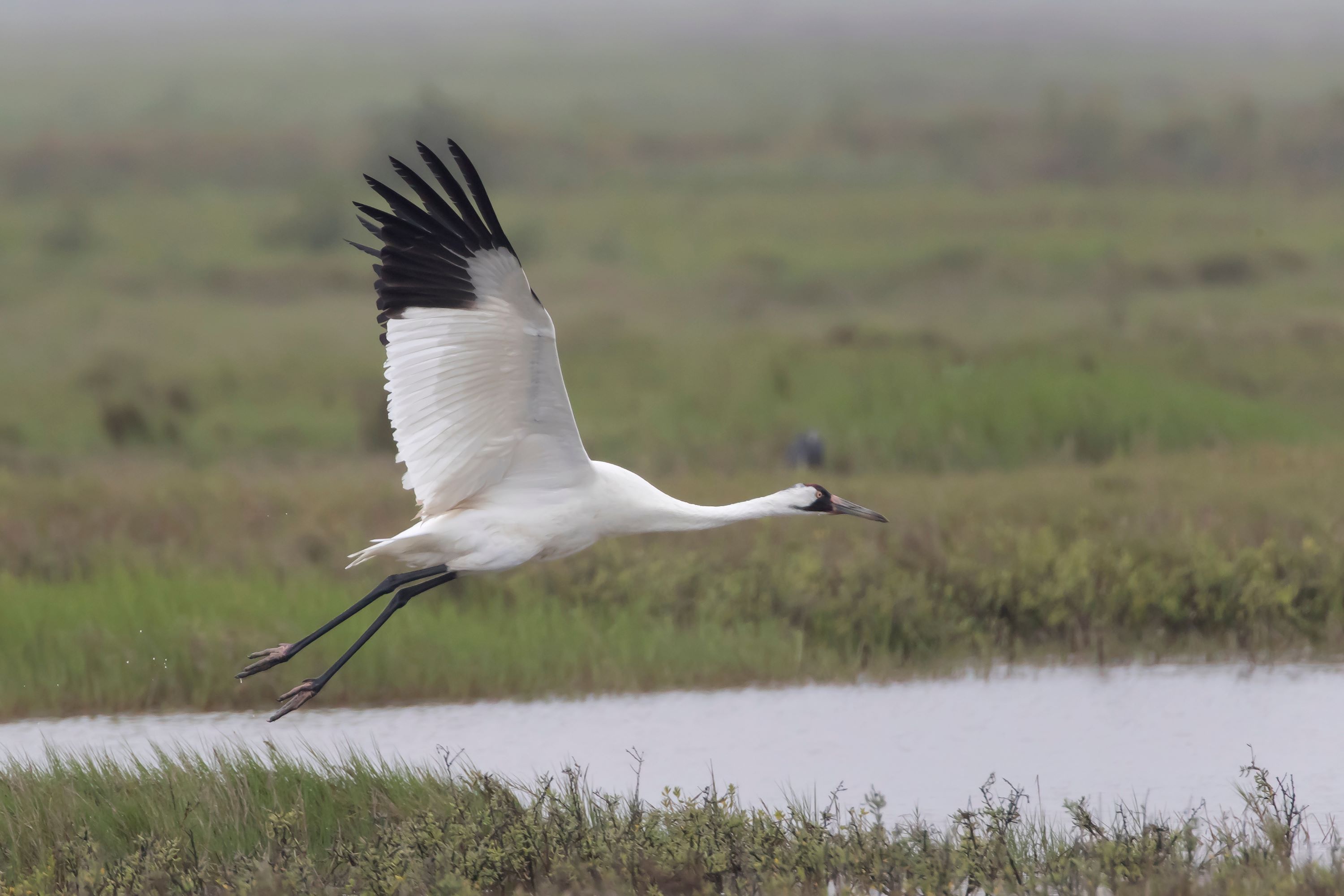
Whooping Cranes in Utah
Whooping Cranes, known scientifically as Grus americana, are among the most striking and celebrated birds in North America, with their distinctive white plumage, black wingtips, and a red crown. These cranes are the tallest birds in North America, standing nearly five feet tall with a wingspan that can reach up to seven feet. Their loud, resonant whooping calls, which can be heard over great distances, are a hallmark of their presence and a critical component of their mating rituals. Whooping Cranes are monogamous and known for their elaborate courtship dances, which include bowing, jumping, and wing-flapping, often accompanied by their signature whooping sound.
Historically, Whooping Cranes inhabited wetlands throughout central and eastern North America. However, by the mid-20th century, habitat loss and overhunting had decimated their populations, bringing them perilously close to extinction. In the 1940s, there were as few as 21 wild Whooping Cranes left. This dire situation led to extensive conservation efforts, including legal protection, habitat restoration, and the establishment of captive breeding programs. These efforts have been successful to an extent, with the population slowly recovering, although the species remains classified as endangered.
One of the most significant conservation achievements for the Whooping Crane has been the establishment of a migratory population that travels between Wood Buffalo National Park in Canada and the Aransas National Wildlife Refuge in Texas. This journey is one of the longest migrations of any bird species, spanning over 2,500 miles. Bird enthusiasts often flock to these areas during migration seasons to witness the spectacular sight of these large birds in flight. In spring and fall, the cranes can be observed in certain flyway states, including Nebraska, where they stop to rest and feed during their long journey.
In recent years, there have been exciting developments in the reintroduction of Whooping Cranes to areas where they formerly lived but were extirpated. This includes efforts in the eastern United States, where a new migratory population has been established, migrating between Wisconsin and Florida. These efforts often involve the use of ultralight aircraft to guide young cranes on their first migration, a method that has garnered significant public interest and media attention.
In 1997, two whooping cranes, part of a unique conservation effort, were spotted in Midway, Utah. These cranes, originally part of a group that followed an ultralight plane from Idaho to New Mexico, were observed feeding in a field alongside sandhill cranes. The whooping cranes had left New Mexico in March and were making their way north. Their presence in Utah was part of their migration route back to their summer home, in Yellowstone National Park. This sighting was significant as it marked a rare appearance of these endangered birds in Utah, underscoring the importance of conservation efforts for their species. For more details, you can read the full article from Deseret News here.